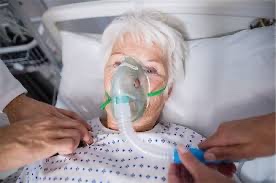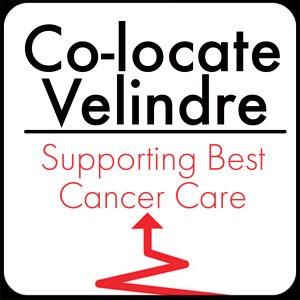The following highlights how an extremely common scenario unfolds in a stand-alone centre versus a co-located site. The hypothetical patients could be any of us or our loved ones. The details used are fictitious but standard and will be only too familiar to every medical professional who reads this
Patient S
Patient S is currently attending an oncology clinic in a stand-alone cancer centre. She is 52, a librarian and lifelong smoker who enjoys walking her dog. She is going to be admitted for the management of pain and feeding problems following her radiotherapy for laryngeal cancer.
S’s husband has been trying to feed her soup and mashed potato to keep her energy up but notices that she has been coughing when she eats. The team explain that she may have been inhaling some of the food because of her abnormal swallow.
S’s prognosis is excellent and her treatment should be curative. She currently can’t cope at home because she struggles to swallow her pain killers. She is becoming dehydrated and is in severe pain. Her team have decided that she should have a tube placed for nasogastric feeding and pain relief with supportive nursing for a few days whilst they regain control of her symptoms. S is admitted to a stand-alone cancer centre, about three miles from the nearest acute hospital.

Several hours later
S is much more comfortable. She has a nasogastric tube in place so she can be fed and receive pain killers. Unfortunately, later that night, S starts to develop temperatures and a cough. The nurses notice she is becoming confused and sounds breathless. A chest x-ray shows pneumonia with the nasogastric tube in the correct location.
Antibiotics and fluids are started immediately and S receives oxygen therapy. In many situations this treatment would be adequate to start to see improvement after a few hours. The nurse looking after her calls the doctor at 02:00 and tells her that S’s blood pressure is very low. The doctor on call attends and gives S some more fluid. She lets the registrar know that S is deteriorating. Of note, the doctor on call has the same level of medical training as the registrar. The registrar is an expert-in-training in the treatment of cancer, not in general medicine.
The registrar agrees that more fluid is appropriate and hopes that the antibiotics and extra volume will have the desired effect. But by 04:00, S is clammy, confused and agitated. Her heart rate is very high and the blood pressure cuff is struggling to pick up a reading. She is on maximal oxygen therapy but her oxygen saturations remain low. She has not passed urine for 12 hours. The extra fluids and antibiotics have not been able to stabilise S in this situation. She needs to receive specialised medications to keep her blood pressure up. She may require special assistance with her breathing. Her kidneys may be failing and she may need a kidney machine for a type of dialysis. These cannot be provided on a peripheral site.
S will need to be transferred to a hospital.
The team call an ambulance and explain the need for a transfer. The ambulance service informs them that there will be a 4-hour wait at least. There are no available ambulances at present. The team are understandably nervous about this because they know that S is going to continue to deteriorate. Indeed, by 08:00, she is rousable to pain only. The doctor can feel that S has a pulse in her neck and groin but they can’t pick up a blood pressure. The ambulance service is re-contacted. They will hopefully be there within the next 60-90 minutes.
At 08:30, S’s breathing pattern becomes abnormal and she stops breathing altogether. The team rapidly identify that S is in cardiac arrest and start CPR. After 6 minutes of CPR and some adrenaline, her heart starts beating again. At that moment, the ambulance team arrives and take over S’s care. She is rapidly transferred to the large teaching hospital 3 miles away. She has another brief cardiac arrest during the journey. Again, with some adrenaline and CPR, her heart starts beating again.
The team contact the hospital at midday to find out what has happened. They are informed that S is in intensive care, on a ventilator and on lots of blood pressure support medication. They anticipate that she will need to be treated with a kidney machine in the following days but state that she is definitely more stable. They cannot know how the cardiac arrest will have affected her brain until she is woken up.
The nurses and doctors at the peripheral site have a debrief
They admit that they all felt helpless because they had to watch S deteriorating before their eyes. They discuss how they approached everything and identified that they had acted appropriately and promptly at every stage. They also correctly identified that there was nothing more they could have provided S within the confines of their service.
S spent 6 days in an induced coma, on a breathing machine. She needed 8 days of kidney support. Thankfully, aside some short term memory problems, one month after her discharge from intensive care, her brain function was normal. She remained in hospital for a further three weeks.
Patient Y
Patient Y is currently attending an oncology clinic in an out-patients’ cancer centre. She is 52, a librarian and lifelong smoker who enjoys walking her dog. She is going to be admitted for the management of pain and feeding problems following her radiotherapy for laryngeal cancer.
Y’s prognosis is excellent and her treatment should be curative. She currently can’t cope at home because she struggles to swallow her pain killers. She is becoming dehydrated and is in severe pain. Y’s husband has been trying to feed her soup and mashed potato to keep her energy up but notices that she has been coughing when she eats. The team explain that she may have been inhaling some of the food because of her abnormal swallow.
Her team have decided that she should have a tube placed for nasogastric feeding and pain relief with supportive nursing for a few days whilst they regain control of her symptoms. She is admitted to the cancer unit that is located within the footprint of a teaching hospital. The centre is completely independent. However , it benefits from receiving the services offered by all the specialties present on the acute site.
Several hours later
Y is much more comfortable. She has a nasogastric tube in place so that she can be fed and receive pain killers. Unfortunately, later that night, Y starts to develop temperatures and a cough. The nurses notice she is becoming confused and sounds breathless. A chest x-ray shows she has pneumonia with the nasogastric tube in the correct location.
Antibiotics and fluids are started immediately and Y receives oxygen therapy. In many situations, this treatment would be adequate to start to see improvement within a few hours. The nurse looking after her calls the doctor at 02:00 and tells her that Y’s blood pressure is very low. The doctor on call attends and gives Y some more fluid. She lets the registrar know that Y is deteriorating. Of note, the doctor on call has the same level of medical training as the registrar. The registrar is an expert-in-training in the treatment of cancer, not in general medicine.
The registrar is on route, but asks for help
The registrar says that she is en route but asks the on-call junior to call the intensive care on call team so that they can come and assess her. By the time the registrar arrives, the intensive care doctor is already there. He sees that Y has a significant infection which has failed to respond to conventional medical management. Y needs to be admitted to high dependency for high flow nasal oxygen and blood pressure support. He adds that she may ultimately need a breathing machine but is not at that stage yet.
The registrar calls ICU
The registrar calls the ICU to request a bed and lets Y’s husband know. The porters arrive 15 minutes later to transfer her to high dependency. By 03:20, Y is in high dependency and is receiving blood pressure medication. She remains confused but is much more alert. She responds well to the extra oxygen therapy and the physiotherapists make good progress with her when helping her to cough and deep breathe. Blood tests show that her kidney function is impaired but thankfully, because her low blood pressure was treated rapidly, her kidney function normalised over the next 48 hours. 72 hours later, Y is able to go back to the specialist cancer wing and is discharged home the following day with a feeding and pain relief plan.
These scenarios are neither exaggerated nor unrealistic. They represent the reality of management of physiological decline within different environments.

